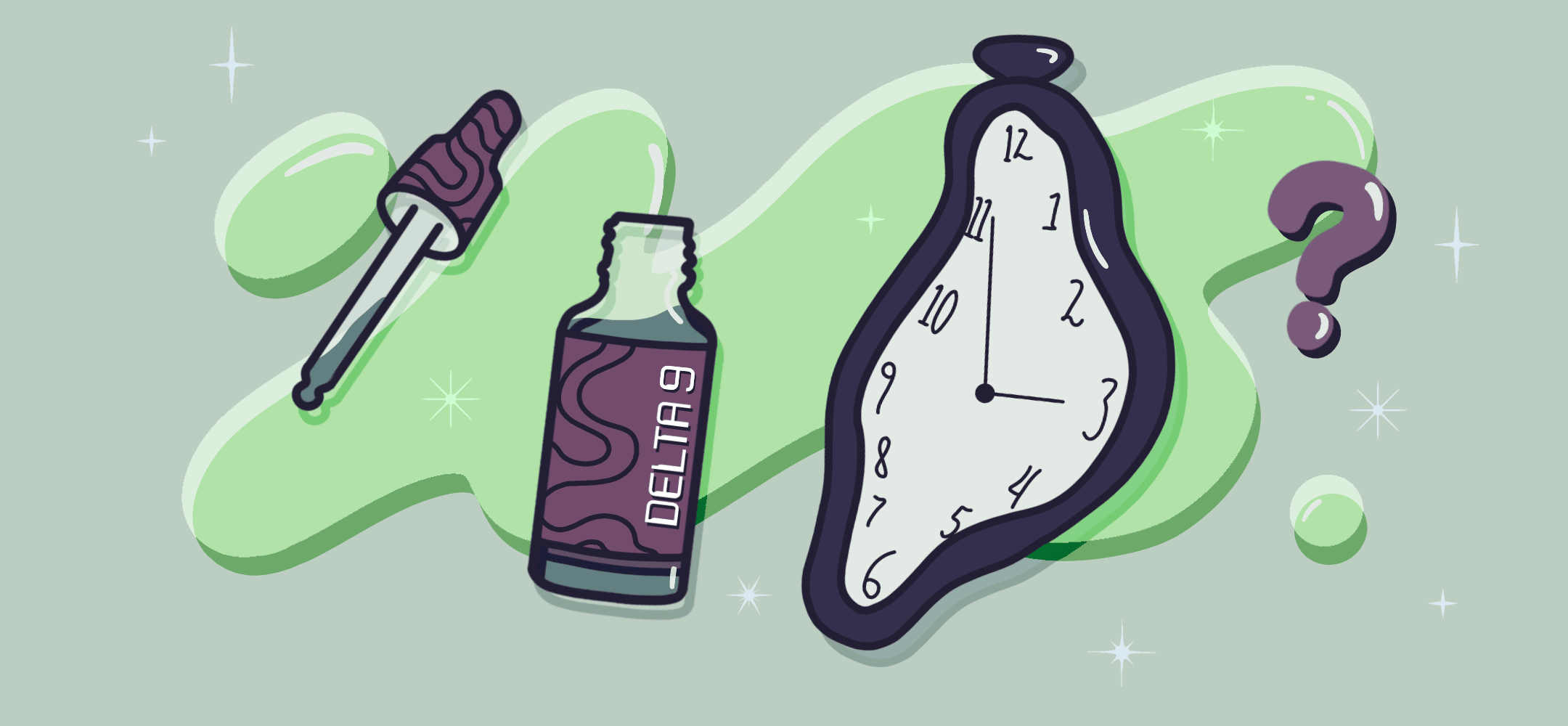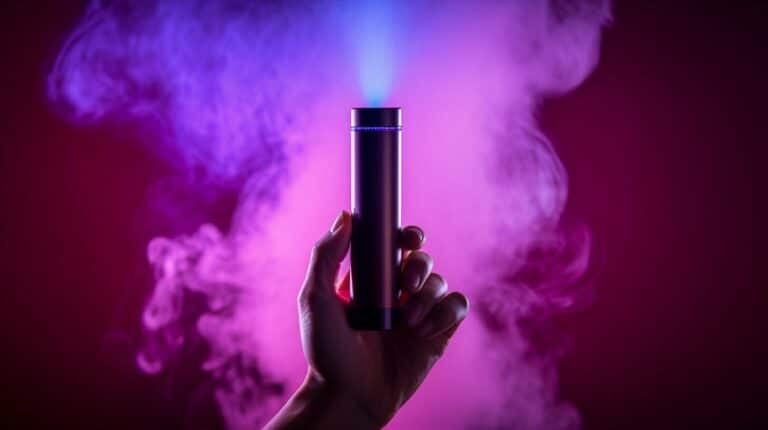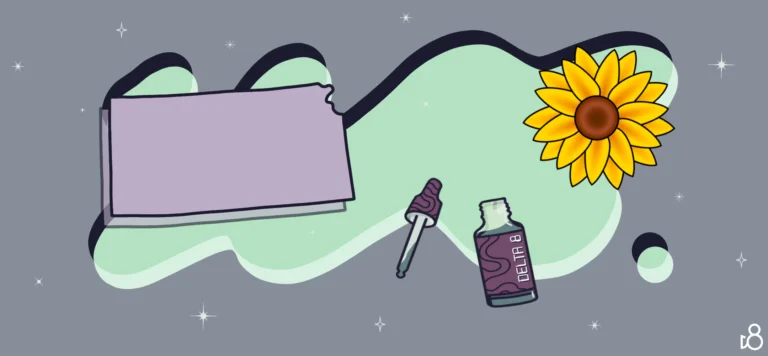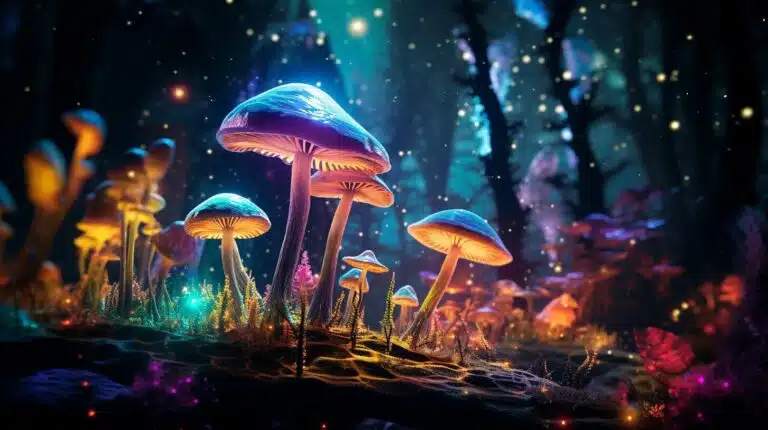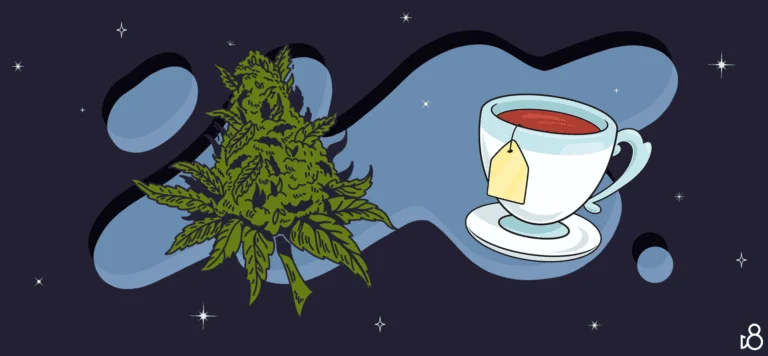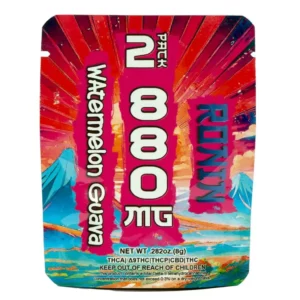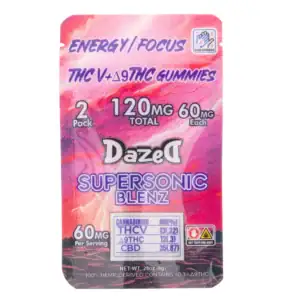Best Time to Take Edibles: Maximizing Benefits While Minimizing Discomfort
Jumping into the cannabis snack game? Here’s the skinny: **timing is key**. My adventure taught me that enjoying these treats means you gotta have some patience and plan ahead.
Unlike inhalation methods, edibles must pass through the digestive system, which leads to a delayed onset of effects. Typically, the effects can take anywhere from 30 minutes to 2 hours to materialize.
So, the best time to take edibles largely depends on the individual’s schedule and the outcomes they’re aiming for.
For those seeking relaxation and sleep aid from edibles, taking them in the evening, a couple of hours before bedtime, could enhance sleep quality. This timing allows the slow onset of edibles to coincide with the natural winding down of the body.
It is important to note that while cannabis is legal for adult use in many areas, it is essential to consume responsibly and be aware of the local laws regarding its consumption.
Table of contents
- Understanding Cannabis Edibles
- Determining the Right Dosage
- Types of Cannabis Edibles
- Maximizing the Benefits of Edibles
- Timing and Onset of Effects
- Safety and Legal Considerations
- Purchasing and Storing Edibles
- Consumption Tips and Best Practices
- Alternatives to Edibles
- Comprehensive Guide to Edibles
- Effects of Edibles Over Time
- Edible Safety and Education
- In-Depth Look at Cannabinoids in Edibles
- Exploring Edible Varieties
- Optimal Conditions for Edible Use
- Navigating the World of Legal Cannabis
- Real World Experiences With Edibles
- The Future of Edibles in the Cannabis Industry
- Impact of Edibles on Health and Lifestyle
- Edibles in Medical Use
- Understanding Edible Potency and Quality
- Guidelines for First-Time Edible Users
- Complementary Foods and Activities with Edibles
- Exploring the Social Aspects of Edible Consumption
- Navigating Dosage Concerns
- Varying Effects Across Different Types of Edibles
- Enhancing the Edible Experience
- Debunking Myths About Edibles
- Advanced Topics in Edibles Consumption
- Special Considerations for Edible Consumption
- Culinary Exploration with Cannabis Edibles
- Managing Expectations and Experiences with Edibles
- The Role of Dispensaries in Edible Education
For recreational or social scenarios, I suggest taking edibles well before the desired time for the effects. This ensures that there’s ample time for the cannabinoids to be digested and for the effects to begin.
I also pay attention to the potency and composition of the edibles, as products with high THC content or those enriched with other cannabinoids and terpenes might alter the duration and intensity of the effects.
Remember, responsible usage is key, and starting with a low dose is prudent, especially for those new to edibles.
Understanding Cannabis Edibles
When discussing the optimal timing for consuming cannabis edibles, it’s essential to understand their unique properties. The way the body processes these products significantly influences the timing and experience.
What Are Edibles?
Cannabis edibles are food items made with marijuana or marijuana oils which can be used as an alternative to smoking or vaping. The active compounds in cannabis, particularly THC (tetrahydrocannabinol) and CBD (cannabidiol), are infused into various types of food products. Edibles are consumed orally and come in numerous forms, from baked goods to gummies, and even beverages.
Unlike inhaled cannabis, edibles must be digested and metabolized by the liver before the THC or CBD enters the bloodstream, leading to a delayed onset of effects, usually 30 minutes to 2 hours.
Cannabis Edibles vs. Smoking and Vaping
Smoking and vaping cannabis allow for THC and CBD to enter the bloodstream rapidly through the lungs. The onset of effects is usually quick, often within minutes. This immediate reaction is due to the direct transition of THC to the brain.
In contrast, cannabis edibles require more time to metabolize and produce effects, which also tend to last longer than those of smoked or vaped weed. The potency of the experience with edibles can be more intense, and the duration of effects can last from four to eight hours, since the liver converts THC to 11-hydroxy-THC, a powerful compound.
Determining the Right Dosage
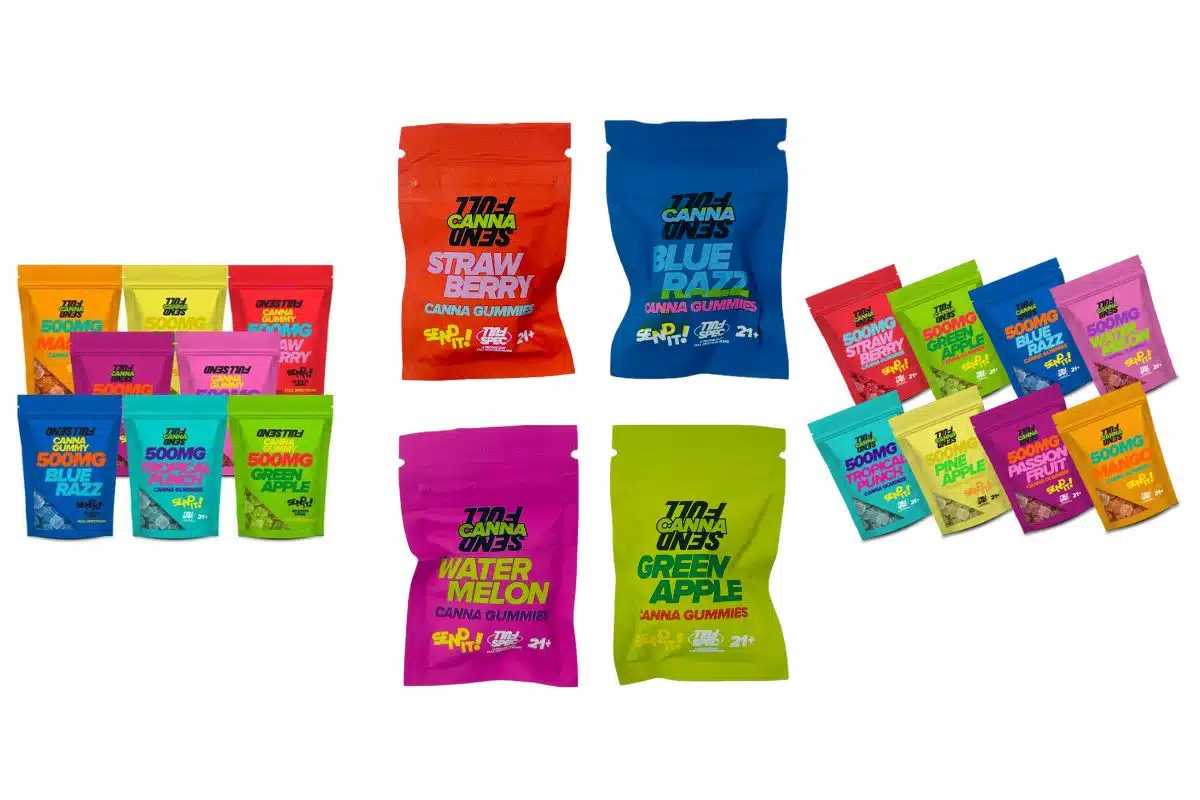
As someone versed in the consumption of edibles, I understand that getting the dosage right is crucial. It’s a delicate balance that can greatly affect one’s experience.
THC and CBD Content
The primary active ingredients in cannabis are THC (tetrahydrocannabinol) and CBD (cannabidiol). THC is the psychoactive component that leads to feeling high, while CBD is known more for its calming and therapeutic effects.
A standard dose of THC is often considered to be 10 milligrams, but for those new to edibles, I recommend starting with a more low dose. For CBD, dosages can vary significantly and may not necessarily lead to a high, but it’s still best to start low and go slow.
Factors Affecting Dosage
Several factors influence the ideal dosage for an individual, including body chemistry, tolerance, and desired effects.
Body chemistry and genetics can dictate how one metabolizes THC and CBD, meaning a dose that is potent for me may not be for someone else.
Similarly, tolerance builds over time; the more frequently I consume cannabis, the higher the dose required to achieve similar effects. Always pay close attention to how my body reacts to different doses to inform future consumption.
Dosing for Desired Effects
Identifying the purpose of my ingestion is key—whether it’s to alleviate anxiety, manage pain, or simply relax.
For anxiety or pain, a moderate CBD dose with lower THC may be beneficial. THC content can be important for those seeking a euphoric high, and starting with a low dose helps ensure I don’t inadvertently overwhelm myself.
Remember, it can take anywhere from 30 minutes to 2 hours for edibles to take effect, so patience is essential after taking an initial dose.
Types of Cannabis Edibles
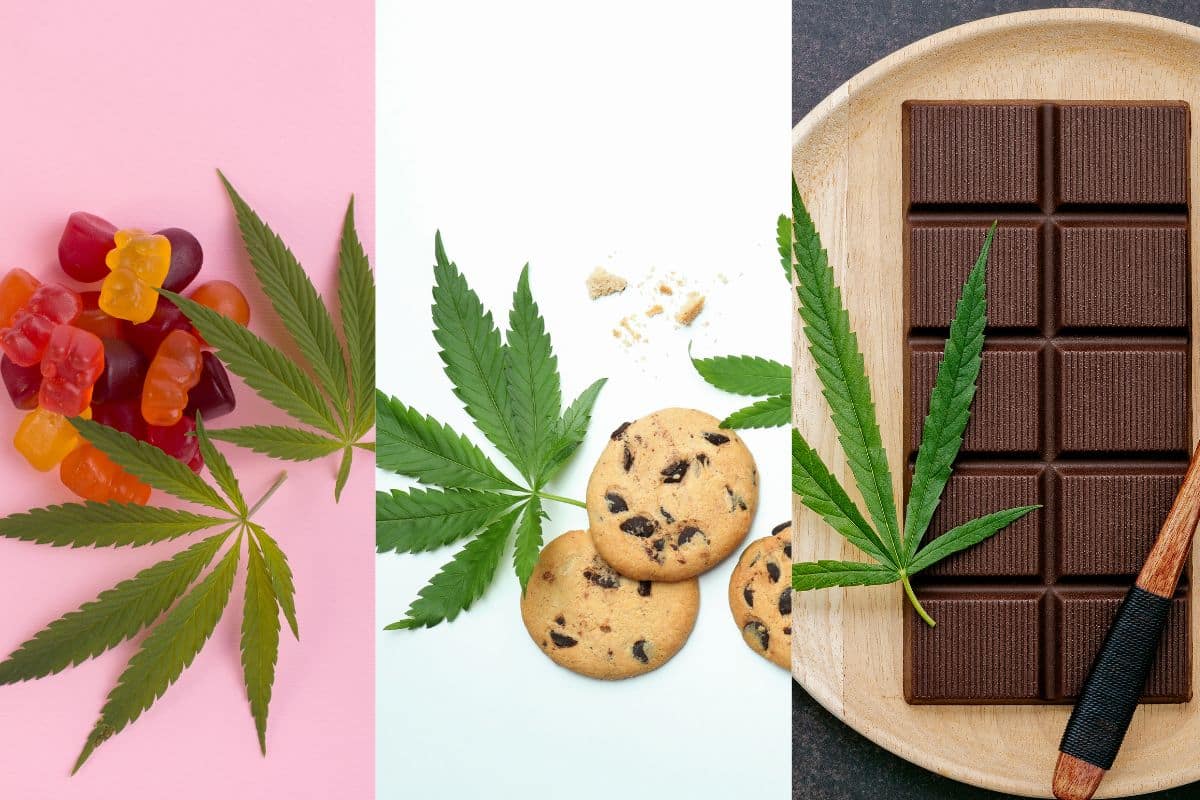
Cannabis edibles come in various forms, each offering a distinct experience in terms of flavor and onset time. I’ll guide you through some of the most popular types, focusing on gummies, brownies, and other baked goods, cannabis-infused beverages, and tinctures.
Gummies, Brownies, and Baked Goods
Gummies and baked goods like brownies and cookies are classic edibles that appeal to my sweet tooth while delivering a consistent dose of cannabis.
They’re discrete and easy to consume, with gummies available in a variety of shapes and flavors. Baked goods, such as brownies or cookies, can provide a more filling option, often masking the herbaceous taste of cannabis with richness and sweetness.
- Gummies: Chewy and sweet, come in doses from microdosed to potent.
- Brownies/Cookies: Homestyle favorites that can be easily portioned.
Cannabis-Infused Drinks
Cannabis-infused drinks are a refreshing way for me to enjoy the effects of cannabis without smoking. They range from sodas and fruit juices to teas and coffees, each providing a unique drinking experience.
The onset of effects from these drinks may vary, but they generally offer a more sociable and casual way to consume cannabis.
- Teas/Coffees: A warm and soothing method, perfect for slow release.
- Sodas/Juices: Sweet and bubbly, typically faster-acting than warmer drinks.
Cannabis Tinctures
A tincture is a concentrated liquid form of cannabis that I find versatile and straightforward to use.
I can place a few drops under my tongue for sublingual absorption, which typically leads to faster effects than edibles that pass through the digestive system. They come with droppers for easy dosing, making them suitable for precise consumption.
- Sublingual Drops: Fast-acting, easy to titrate, and often come in a variety of flavors.
- Sprays: Convenient for micro-dosing and on-the-go use, often with refreshing flavors like mint.
Maximizing the Benefits of Edibles
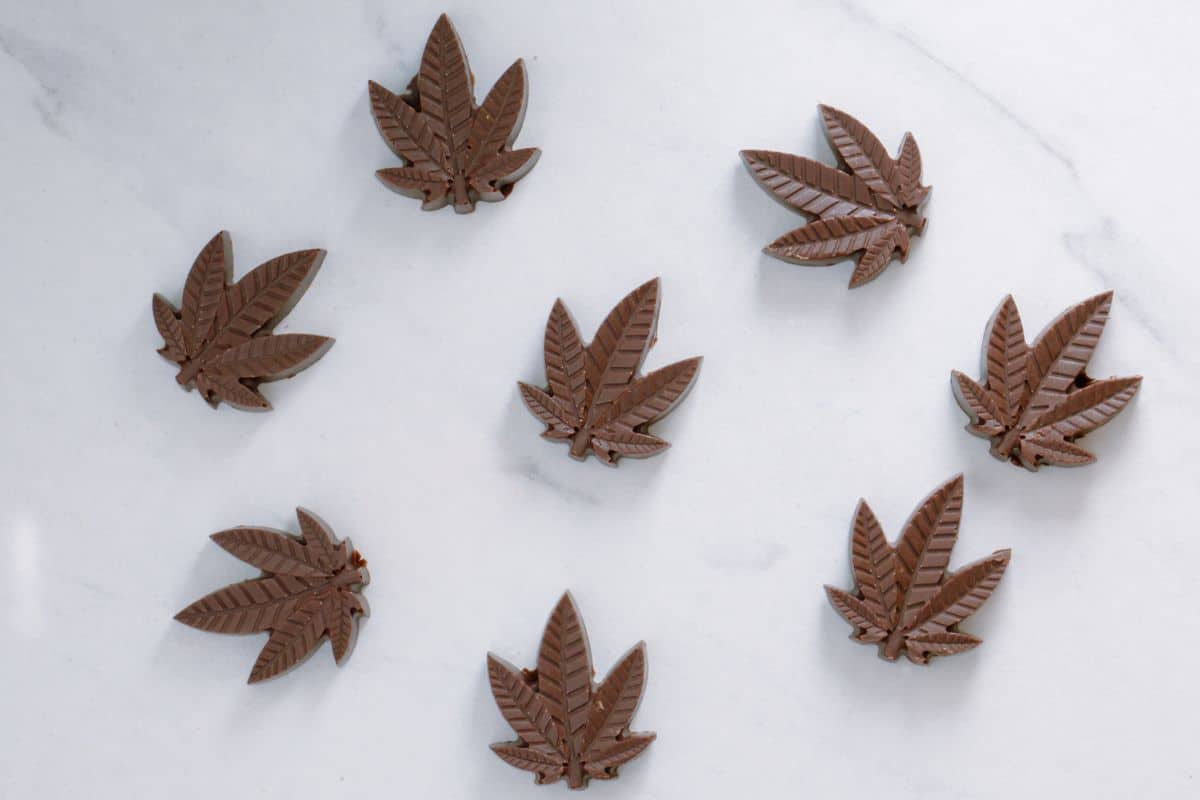
When I consume edibles, my focus is on using them strategically to enhance their effectiveness and align with my desired outcomes, be it for therapeutic purposes or to aid relaxation and sleep.
Therapeutic Uses
For therapeutic benefits, timing the consumption of edibles is crucial for managing symptoms effectively.
I’ve found that taking edibles on a full stomach can delay the onset but extend the duration of effects due to slower digestion. This can be beneficial for conditions requiring long-lasting relief such as chronic pain or inflammation.
Edibles taken for medical benefits should align with the peak period of discomfort or symptom intensity. For me, this ensures that the active components are fully utilized when they’re most needed.
Edibles for Relaxation and Sleep
To use edibles for relaxation and aiding sleep, I consider my body’s digestive cycle and the typical time it takes for edibles to induce drowsiness.
Ingesting them 1-2 hours before my desired bedtime can offer a smooth transition into sleep. This approach takes into account the time required for the edibles to reach their peak effectiveness in my system, facilitating a restful night’s sleep without the grogginess that sometimes follows other sleep aids.
Timing and Onset of Effects
When discussing the effects of edibles, I focus specifically on the understood timelines for onset and how various factors can alter these timeframes. It’s pivotal to grasp that while effects can vary greatly, they are predominantly influenced by individual biology and the makeup of the edible consumed.
How Long Does It Take to Kick In?
Upon consuming an edible, the initial effects may not be instantaneous. Typically, it takes anywhere from 30 minutes to 2 hours for the effects to kick in. This is because edibles must pass through the digestive system and the liver. Only after this processing does the active compound enter the bloodstream and the effects begin to manifest. The peak of these effects can often take longer to achieve and may vary in intensity.
Factors Influencing the Onset Time
Numerous factors can influence the onset time of edibles’ effects. Metabolism plays a crucial role—a fast metabolism may lead to quicker onset times. Additionally, having an empty stomach can expedite the kick-in phase, presuming there are fewer contents in the stomach to digest. This allows the edible to be metabolized by the liver more swiftly.
Conversely, having a full stomach can slow down the process, potentially leading to a delayed onset. The time it takes to reach peak effects can also be contingent on the type of edible and its concentration of active ingredients, as well as the user’s overall tolerance and bodily efficiency at processing compounds.
Safety and Legal Considerations
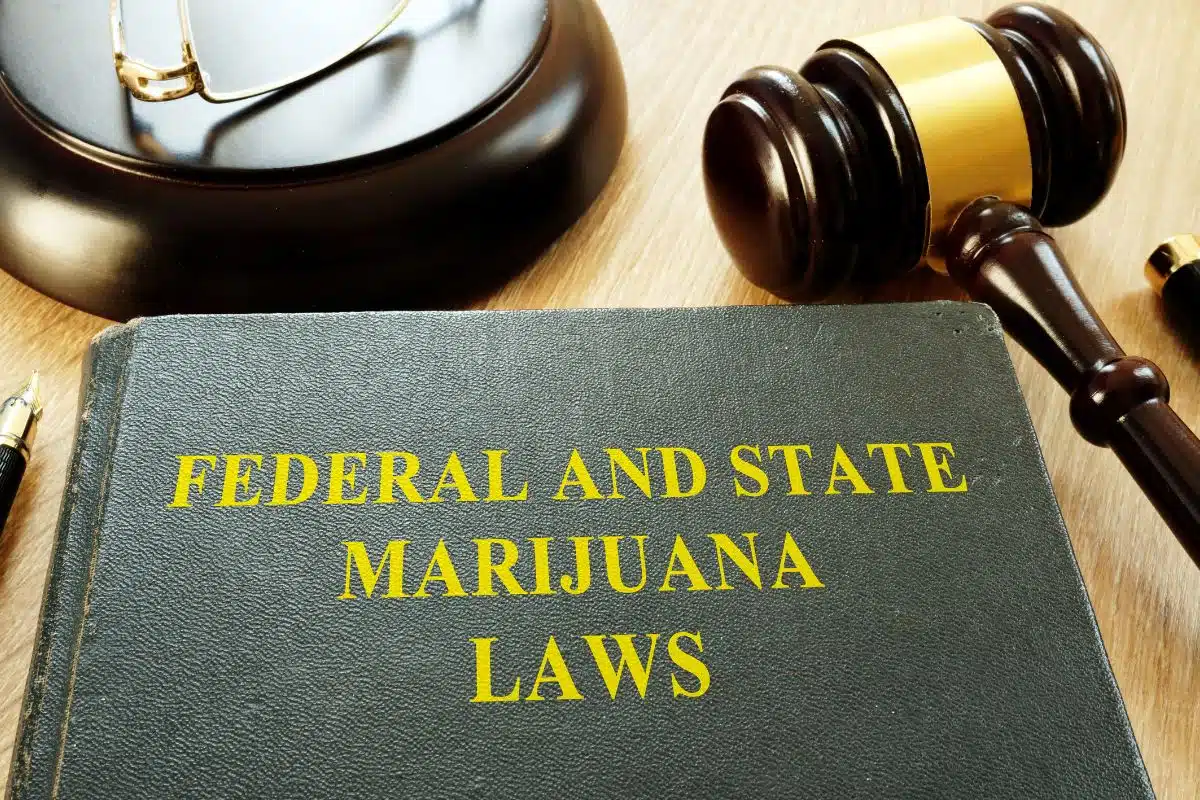
Before I dive into the specifics, it’s crucial for readers to grasp that navigating the world of edibles requires a clear understanding of the legal landscape and a heightened awareness of their potential effects. My intention is to provide information that ensures both safety and compliance with the law.
Understanding the Law
Navigating the law is paramount when it comes to cannabis edibles. Legally, I can purchase and consume edibles only in states where cannabis is legalized, either for medical or recreational use. It is my responsibility to confirm that I am in compliance with local and state regulations before making any purchase. This includes understanding the legal age for purchase and use, the amount I am legally allowed to possess, and the location where consumption is permitted. Edibles should be purchased legally from licensed dispensaries, where the products have undergone mandatory testing and meet strict packaging and labeling regulations to ensure safety.
Managing and Mitigating Side Effects
Edibles are potent, and their effects can last much longer than inhaled flower cannabis. To mitigate side effects and reduce adverse effects, I start with a low dose, especially if I am new to edibles, and wait for at least two hours to understand the full impact before considering taking more. Impairment can be significantly more pronounced with edibles, presenting a risk if I plan to drive or operate machinery. Additionally, labels on the packaging provide critical information on dosing and potential side effects, which is why I always read them meticulously. If I ever feel overwhelmed by the effects, I seek a safe, calm environment and remember that the feeling will pass with time.
Purchasing and Storing Edibles
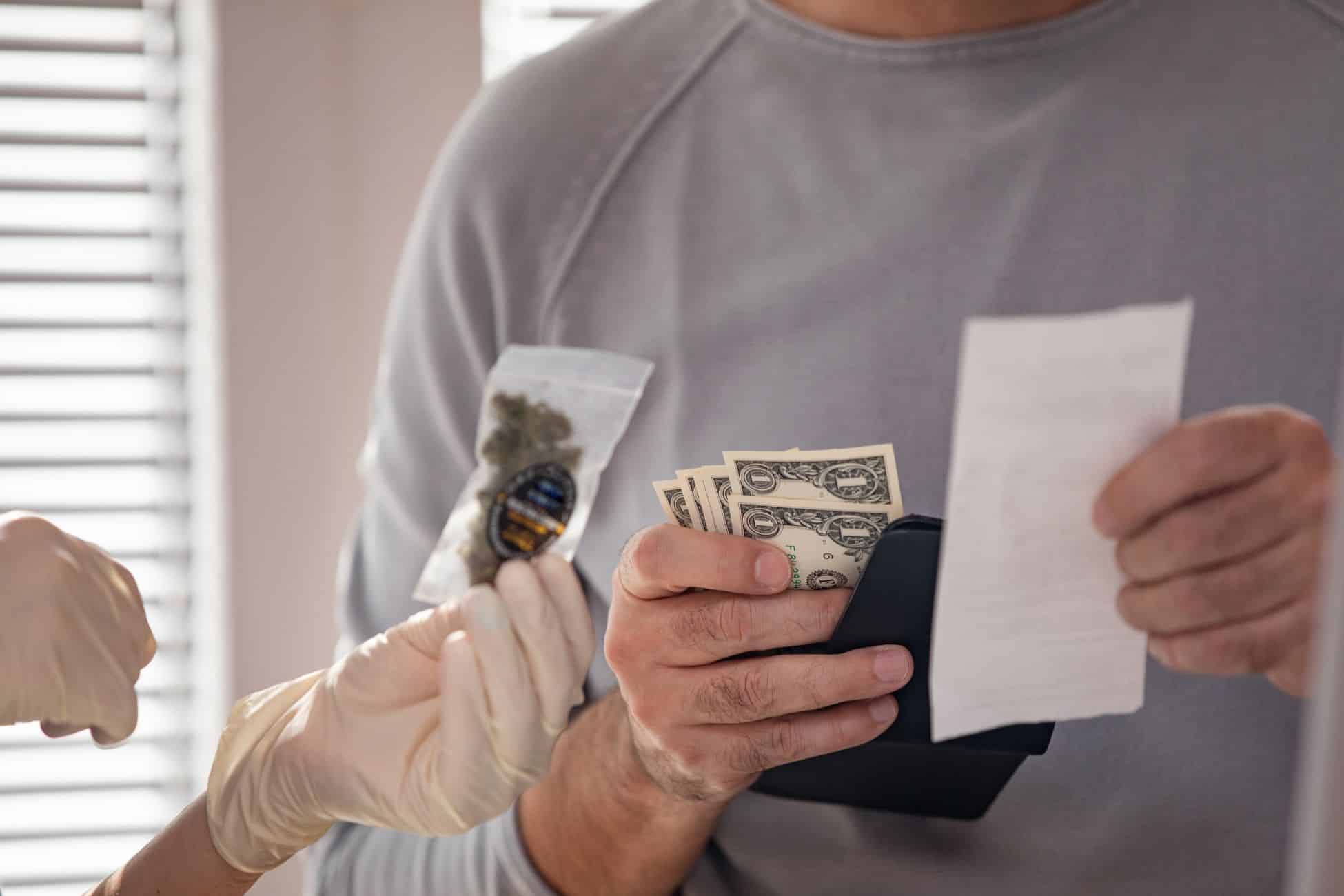
When it comes to edibles, understanding where to purchase them and how to store them properly is essential to maintain their quality and efficacy. I’ll guide you through the best practices to ensure you get the most out of your marijuana-infused products.
Where to Buy Edibles
Dispensaries: The most reliable place to buy edibles is at a licensed dispensary. Here, you can find a variety of products with different potencies and flavors. I always check Leafly’s guide to edibles to help determine which products might be right for me.
- Leafly: Before visiting a dispensary, I like to research on Leafly. It’s a comprehensive resource for finding the types of edibles available, such as gummies, chocolates, or baked goods. This empowers me to make an informed decision about what to purchase.
Storing for Potency and Longevity
Controlled Environment: To maintain the shelf life and effectiveness of weed edibles, it’s crucial to store them in a cool, dark place. Moisture and heat can degrade the quality, so I make sure to keep them in airtight containers away from direct sunlight.
- Refrigeration: For longer storage, refrigeration can be a good option, especially for certain food products like chocolates or perishable baked goods. Freezing is also an option, but it might alter the texture of some edibles.
Consumption Tips and Best Practices
When introducing edibles into my routine, I focus on the mantra “start low and go slow” to ensure a comfortable and manageable experience. Understanding my body’s reaction to various dosages and types of edibles, like a pot brownie, is crucial for a consistent and enjoyable experience.
How to Start
- Starting Dosage: I begin with a low dose, typically around 2.5 to 5 milligrams of THC, to gauge my body’s reaction.
- Timing: I consider that edibles take longer to have an effect, often from 30 minutes up to 2 hours, due to the digestion and absorption process.
- Consistency: To maintain a consistent experience, I take edibles at similar times under similar conditions, paying attention to my body weight and energy levels.
Evaluating Your Experience
- Intensity Tracking: After consuming an edible, I note the time and document when I start feeling the effects to understand the onset and intensity of 11-hydroxy-THC, the potent cannabinoid created when ingesting THC.
- Dose Adjustment: Depending on my initial experience, I may adjust the dose slightly, but always with caution and several days apart to respect the cannabinoids’ lasting power.
Alternatives to Edibles
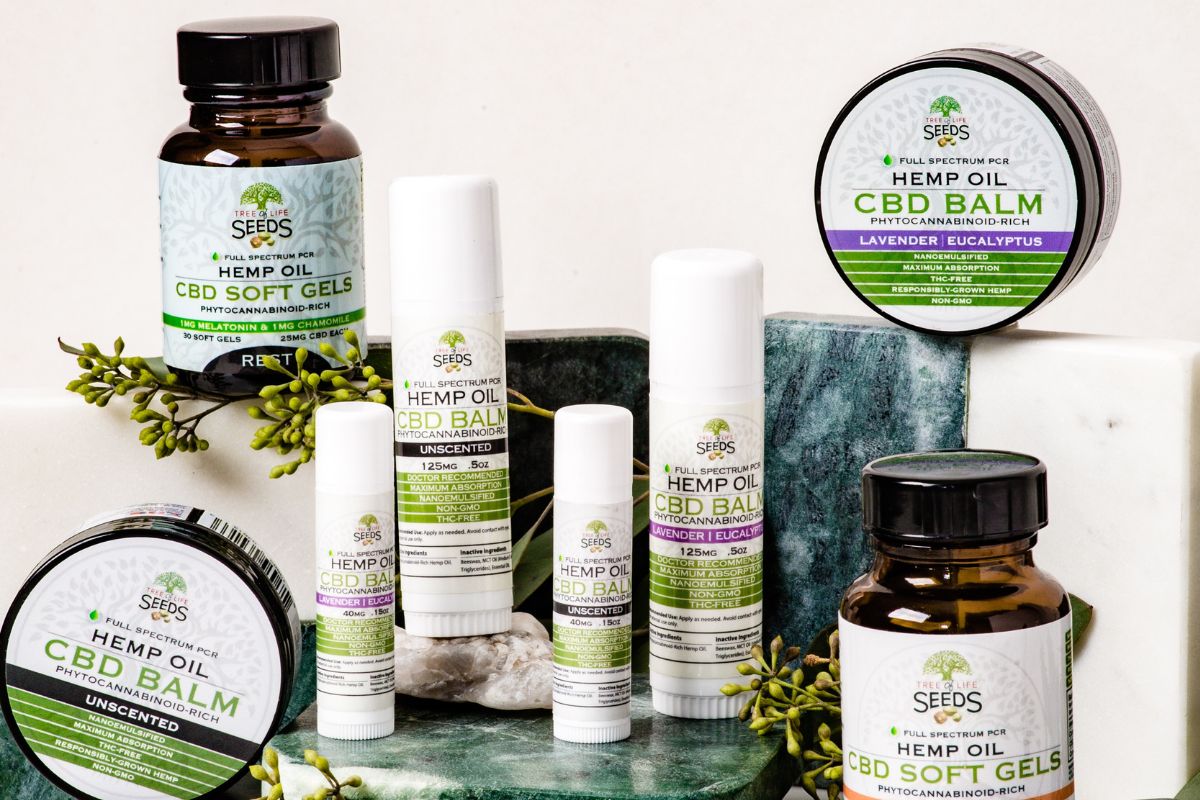
When considering cannabis consumption methods outside of edibles, I find two predominant alternatives that offer their unique advantages: topical applications and inhalation methods like vaporizers and dabs.
Topicals and Other Cannabis Products
Topicals refer to cannabis-infused lotions, balms, and oils that are applied directly to the skin. I personally recommend them for localized relief, as they allow for targeted application without the psychoactive effects often associated with other cannabis products. This is due to topicals typically not entering the bloodstream. For individuals seeking to address joint pain or skin conditions, cannabis-infused topicals provide a discreet and controlled option.
Vaporizers and Dabs
On the other hand, vaporizers heat cannabis flower or concentrates to a temperature that produces vapor, rather than smoke. In my experience, this method is favored for its efficiency and perceived reduction in respiratory irritation compared to traditional smoking methods. Vaporizers come in various forms, from portable hand-held devices to larger, more stationary units.
Dabs, meanwhile, involve a more concentrated form of cannabis, often referred to as wax, shatter, or budder. This method utilizes a dab rig, which is akin to a high-temperature bong, allowing me to inhale vaporized cannabis concentrates. This results in a potent and fast-acting experience. While dabs might seem intimidating due to the equipment and intense effects, they are increasingly popular for experienced users who prefer higher potency.
Comprehensive Guide to Edibles
When I discuss edibles, I’m referring primarily to cannabis-infused products. These range from baked goods to gummies, and even tinctures.
It’s important to consider various factors before consuming edibles, as they affect individuals differently compared to smoking or vaping cannabis.
Factors Influencing Edibles:
- Metabolism: My digestion and metabolism speed play a crucial role in how quickly I feel the effects.
- Dosage: Edibles come in milligrams (mg) of cannabinoids. I start low, often at 5mg or 10mg, to gauge my sensitivity.
The timeline for onset of effects is variable. Generally, I expect to feel something between 30 minutes to 2 hours after ingestion. The peak impact usually hits me at around the 3-hour mark.
When I take edibles for relief, whether that be pain or anxiety, I plan my schedule to accommodate this delayed onset.
- Eating Habits: Eating edibles on an empty stomach can lead to a more intense and quicker onset of effects because of the faster absorption. A full meal beforehand may delay the effects.
The duration of edibles’ effects can be quite lengthy. I prepare myself for a longer commitment, often 6 to 8 hours, though this is subject to personal variation.
Tinctures, which are liquid extracts, might appeal to me if I’m looking for something that works faster yet is still discreet. Placed under the tongue, tinctures are absorbed sublingually, usually working within 15 to 45 minutes.
Effects of Edibles Over Time

When considering edibles, I have to be mindful of how the effects can vary over time. It is crucial to track the dosage and my body’s response, as well as to understand how tolerance can build up, altering the experience with subsequent uses.
Tracking Dosage and Effects
When I ingest edibles, the onset of effects can typically occur between 30 minutes to 2 hours, depending on various factors such as the dosage and my metabolism.
I maintain a log to record the milligrams of THC and the corresponding effects. This practice assists in finding a dose that provides the desired intensity of the high without unintended consequences.
- Dosage Taken: For consistency, I note down the exact milligrams of THC in the edibles I consume.
- Time of Onset: I record the time I start feeling the effects.
- Peak Intensity: I keep track of the time when the effects are at their strongest.
- Duration: I observe how long the effects last until they completely subside.
Understanding Tolerance Build-Up
Over time, I might notice that the same dosage of edibles doesn’t produce the same effects. This shift is likely due to tolerance. With regular consumption, my body becomes accustomed to the presence of THC, which means I might need to increase the dosage to achieve the same intensity.
However, increasing the dose should be done cautiously, to avoid overconsumption and adverse effects.
- Starting Tolerance: I assess my initial response to edibles to establish a baseline.
- Increased Dosage: If necessary, I gradually increase the dosage while keenly observing the changes in the effects.
- Break Periods: To manage and reset my tolerance, I consider taking breaks from consuming edibles.
Edible Safety and Education
Before diving into the specifics, it’s essential for me to understand that consuming edibles requires informed decision-making and awareness of their effects. Safety and education are critical to ensure responsible use and to mitigate risk.
Learning About Edibles
I have found that educating myself on edibles is the first step towards maximizing safety. Edibles refer to food products infused with cannabis, and they differ from inhaled cannabis in terms of delayed onset of effects and extended duration.
It is important to obtain reliable information on the potency and composition of edible products. I must also be aware that labels can sometimes be misleading, so seeking out reputable sources or materials that evaluate the knowledge of food safety and edible safety is highly beneficial.
Responsible Usage and Precautions
Responsible use of edibles is paramount. This means starting with a low dose and going slow.
I always adhere to the recommended serving size and afford sufficient time—typically 1 to 2 hours—to gauge their impact on me.
Being aware of the unique risks of overconsumption which can lead to uncomfortable or harmful experiences, prompts me to take necessary precautions.
Moreover, when I consider edibles, I take into account consumer use and understanding of labelling information, which is pivotal in making informed choices.
I always ensure my environment is safe and familiar when trying edibles, and I keep emergency information accessible should the need arise – all part of practicing moderate and responsible use.
In-Depth Look at Cannabinoids in Edibles

In my exploration of edibles, I find the intricacies of cannabinoid profiles and their in-body transformations to be critical for understanding their effects.
Cannabinoid Profiles
The cannabinoid profile of an edible profoundly influences its effects.
THC (delta-9-tetrahydrocannabinol) and CBD (cannabidiol) are the two most prominent cannabinoids found in cannabis.
My insight into these profiles suggests that THC is primarily responsible for the psychoactive effects, while CBD is known for its non-intoxicating, therapeutic benefits. Depending on the strain and product, the balance of these cannabinoids can vary significantly.
- THC-rich edibles: May induce euphoria, altered perception, and in some cases, anxiety.
- CBD-rich edibles: Often sought for potential relief from anxiety, pain, and inflammation without a strong psychoactive effect.
From THC to 11-Hydroxy-THC
Once ingested, THC edibles introduce a fascinating metabolic process.
THC is metabolized by the liver into a compound called 11-Hydroxy-THC, which has a stronger and longer-lasting effect.
I understand that this process can intensify the experience of the edible due to the potency of 11-Hydroxy-THC.
- Body chemistry: Variations in individual metabolism mean that the same edible can have different effects from person to person.
- Time of onset: The transformation to 11-Hydroxy-THC can lead to a delayed onset of effects, typically between 30 minutes to 2 hours after ingestion.
Exploring Edible Varieties
When it comes to cannabis edibles, consumers are presented with a wide array of varieties ranging from sweet to savory options, each with distinctive effects and durations. In this section, I’ll guide you through some popular forms of edibles to consider.
Confectioneries and Savory Options
Confectioneries typically refer to the sweet edible varieties. Here’s a list of popular confectionery types of cannabis edibles:
- Gummies: These are perhaps the most common and are available in a spectrum of flavors, shapes, and potencies.
- Brownies and Cookies: Baked goods like brownies and cookies are traditional options, ideal for those who prefer a hearty, richer edible experience.
- Lollipops and Hard Candy: Perfect for those seeking a slow-release effect as they dissolve over time.
- Mints: These are a discreet way to consume edibles and can be handy for microdosing.
Moving on to savory options, these are less commonly mentioned but equally viable. They include items such as:
- Savory snacks like cannabis-infused chips or crackers, which cater to those who may not have a sweet tooth.
While exploring these varieties, it’s important to consider the onset times and dosages. For example, gummies and mints might kick in faster than brownies or a savory snack.
Each brings its own set of characteristics to the table, not just in terms of flavor but also in how they are metabolized by the body.
Optimal Conditions for Edible Use
Edibles, those ingestible forms of cannabis, can be beneficial for various purposes such as anxiety relief, sleep aid, pain management, and relaxation. Timing their use is critical due to the delayed onset of effects compared to other forms of cannabis consumption.
Best Time to Take Edibles
- Anxiety: For managing anxiety, I recommend taking edibles during the early evening. This allows time for the effects to kick in before the typical evening wind-down period. However, if daytime anxiety is a concern, a smaller dose at the beginning of the day might be appropriate. This ensures it doesn’t interfere with daily responsibilities.
- Sleep: If I’m using edibles to aid in sleep, I find it most effective to consume them 1 to 2 hours before bedtime. This allows sufficient time for the active compounds to begin their effects.Often, this results in a restful night’s sleep without lingering grogginess in the morning.
- Pain: When taking edibles for pain relief, the best time can vary depending on the type and duration of pain.For chronic pain, a regular dosing schedule might be best, such as in the morning and evening. For acute pain, I use them as needed, keeping in mind the onset time of 30 minutes to 2 hours.
- Relaxation: For general relaxation, I enjoy consuming edibles during late afternoon or early evening. This capitalizes on the natural progression towards relaxation that the body follows and can enhance the unwinding process after a long day.
Navigating the World of Legal Cannabis

When I discuss the legal cannabis industry, I’m addressing a rapidly evolving market that requires constant attention to remain compliant and informed about the best use of cannabis products, including edibles.
Legal Landscape
In my experience, understanding the legal landscape of cannabis is critical, especially when considering the best time to take edibles.
Each state has its own regulations, and they can dictate not only the legality but also the types of cannabis products available.
For instance, dispensaries are the main legal outlets where I can purchase marijuana products, including edibles, vapor cartridges, and various forms to smoke.
However, the product offerings and the legal age to purchase these items greatly vary from state to state.
The rise in the popularity of vapor products has led to increased scrutiny by regulators. Vapor products offer a smoke-free way to consume marijuana, but not all regions treat these products the same.
It’s essential for me to check the local laws to ensure that the vapor products I might be interested in are legal and regulated.
Real World Experiences With Edibles
My exploration into the realm of cannabis edibles has been an enlightening journey. I have discovered that timing and context greatly affect their impact on relaxation, pain relief, energy levels, and the potential for anxiety or other side effects. The myriad of experiences shared by users also highlights the need for understanding one’s own tolerance and the possibility of impairment.
User Stories
- John, 35, Chronic Pain Sufferer: “Taking a small dose of an indica-based edible two hours before bed has been my routine. It helps ease my back pain without the grogginess I used to get from prescription meds.”
- Linda, 28, Recreational User: “I prefer sativa-dominant edibles on a lazy Sunday afternoon. They lift my energy levels just enough for a pleasant hike. Any later, and I’d be too alert to sleep.”
| User | Purpose | Timing of Dose | Effects | Impact on Sleep |
| John | Pain relief | Evening | Relaxation, pain relief | Improved |
| Linda | Recreation | Early afternoon | Increased energy, relaxation | None |
My friends often recount tales of overindulgence leading to uncomfortable levels of anxiety and impairment. For me, I’ve learned that starting with a low dose is paramount to finding the sweet spot for my desired effects, whether it’s mitigating my anxiety or ensuring a state of calm.
The Future of Edibles in the Cannabis Industry
The edibles segment within the cannabis industry is poised for innovative shifts and a trend towards sophisticated standardization.
Innovations and Trends
I’ve observed that edibles are becoming more than just a novelty. The cannabis industry has made significant strides with edibles, incorporating advanced culinary techniques and precise dosing for consistent user experiences.
New trends are emerging rapidly. There’s a clear shift toward healthier edible options that cater to dietary restrictions and preferences, reflecting a broader consumer awareness about wellness. This includes gluten-free, vegan, and sugar-free cannabis-infused products.
Innovations in the edibles market also lean towards microdosing options, where I’ve seen products containing lower doses of THC for those seeking mild effects or medicinal benefits without a pronounced psychoactive experience.
The concept of standardization is gaining momentum. I anticipate the development of more rigorous testing and labeling standards, which will mitigate the issue of inconsistent potency and quality.
Recognizing these standards before diversifying product variety ensures consumer safety and trust, which are critical for the industry’s growth.
The industry is also observing a surge in gourmet and artisanal edibles, elevating the consumption experience to rival that of fine dining. I expect this trend to continue as cannabis chefs and chocolatiers push the boundaries of flavor and presentation.
Lastly, with the integration of technology and data analytics, producers can better understand consumer preferences, leading to a more personalized edible experience. As a confident observer of this industry, I see a future where edibles are both an art form and a reliable cannabis consumption method.
Impact of Edibles on Health and Lifestyle
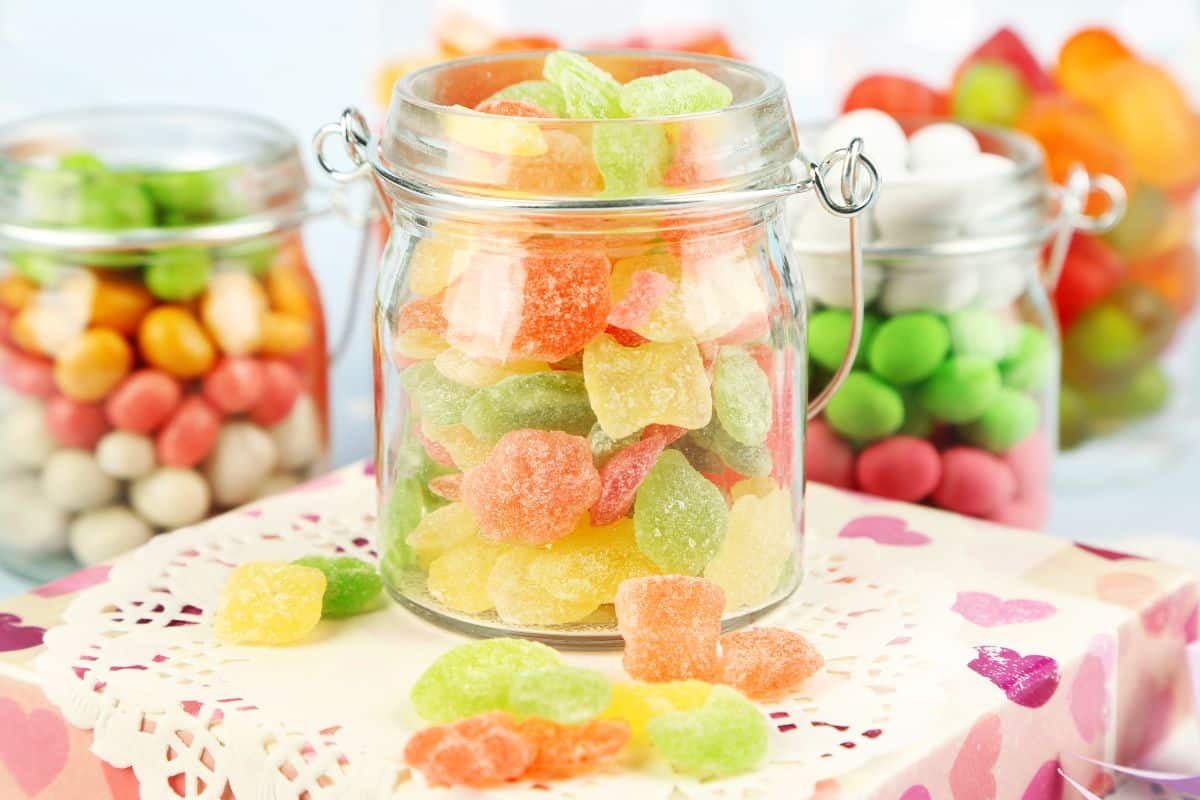
In my exploration of edibles and their role in health and well-being, I’ve identified critical factors related to lifestyle integration and health implications.
Lifestyle Integration
Integrating edibles into my lifestyle requires careful consideration of their potency and onset time.
Personal schedules and responsibilities often dictate the best time for ingestion. For instance, enjoying edibles may be suitable for my relaxation periods rather than during work hours.
Edibles typically have a delayed onset of effects, often taking 30 minutes to 2 hours before noticeable impacts occur, influencing when I choose to partake.
Health Implications
When assessing the health implications of edibles, my focus turns to both their therapeutic benefits and potential side effects.
Edibles provide a smoke-free alternative, which is beneficial for my respiratory health. However, the risk of overconsumption is higher due to delayed effects, which might lead to unintended side effects such as anxiety or discomfort.
It’s crucial for me to understand the proper dosing and the importance of start low and go slow to mitigate risks.
Edibles in Medical Use
In my exploration of cannabis edibles’ role in medical therapy, I have focused on their specific applications in treating certain conditions. Patients turn to edibles for various reasons, often seeking relief from symptoms where conventional medicine may fall short.
Cannabis Edibles in Therapeutics
When it comes to therapeutics, I understand that the potency and long-lasting effects of cannabis edibles make them a valuable option for patients suffering from chronic conditions.
Significant outcomes are seen in areas such as:
- Medical Benefits: Edibles provide a mode of cannabis consumption free from the potential harms of smoking, allowing for the ingestion of cannabinoids that have been shown to alleviate chronic pain and inflammation.
- Inflammation: In my research, edibles containing anti-inflammatory compounds like CBD are of substantial interest. They have the potential to reduce inflammation without the psychoactive effects associated with THC.
- Pain: For pains that are persistent and debilitating, edibles can provide longer-lasting relief when compared to inhaled forms of cannabis, as the cannabinoids are gradually released into the bloodstream.
- Nausea: Patients undergoing chemotherapy or other treatments that induce nausea may find that edibles help to subdue this unsettling side effect, allowing them to maintain their appetite and strength.
I recommend that those considering edibles for medical use consult with their healthcare provider to ensure proper dosage and to mitigate potential interactions with other medications. Safe and informed use of edibles can be an integral part of a comprehensive treatment plan for various medical concerns.
Understanding Edible Potency and Quality
When I discuss edible cannabis products, potency and quality are paramount. My intent is to demystify the often complex world of THC content and the factors that contribute to the strength of edibles.
Assessing Edible Strength
Recognizing the strength of cannabis edibles is essential.
Potency is often measured in milligrams of THC, the primary psychoactive component.
I carefully consider the labeled dosage, which provides me with a clear indication of THC content per serving.
Edibles signal their strength through these milligram figures, allowing me to make informed decisions.
High-quality edibles should come with precise and consistent THC dosages, ensuring predictable effects.
The process includes thorough testing and adherence to quality control measures.
For personal safety and experience optimization, I rely on products with a confirmed and uniform strength profile, avoiding those with uncertain or fluctuating potencies.
Guidelines for First-Time Edible Users
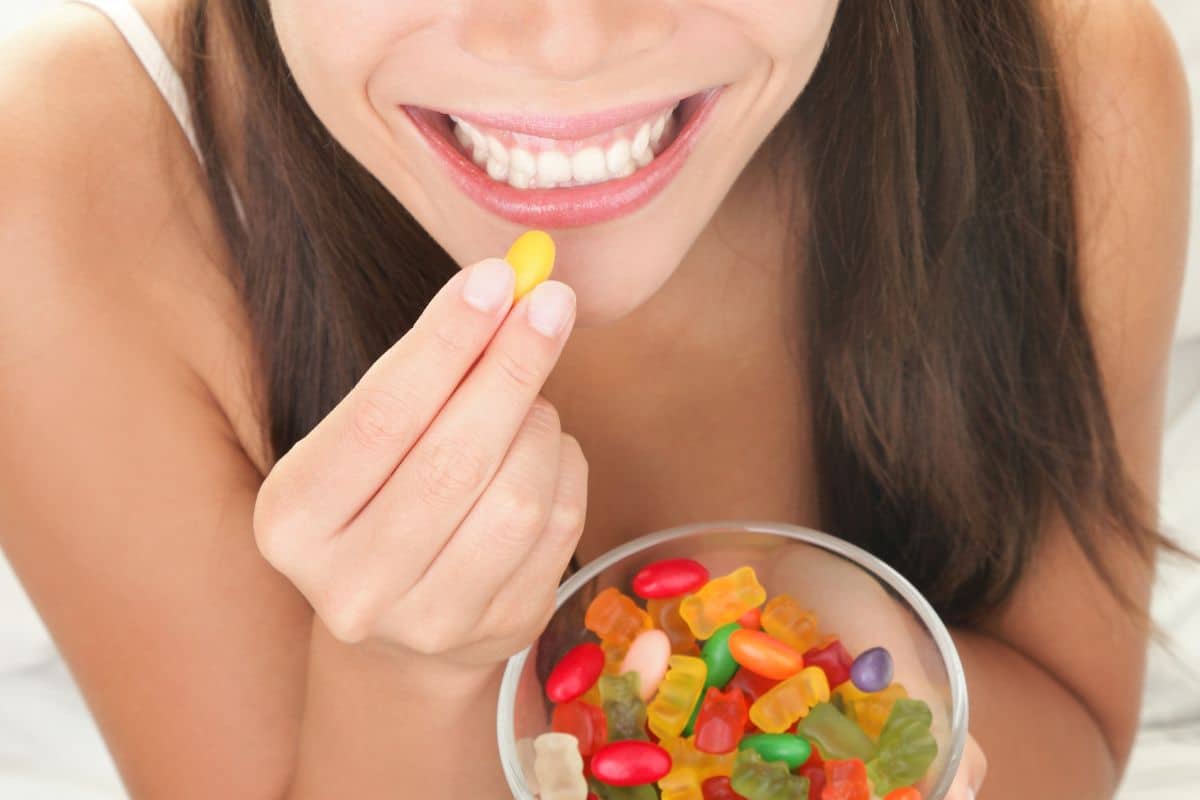
When I first consider using edibles, understanding proper dosing is crucial to ensure a positive and safe experience.
First-Time Dosing
For first-time users, my recommendation is to start low and go slow with dosing.
Edibles can take anywhere from 30 minutes to 2 hours to take effect, and the intensity can be surprising.
A common dosing starting point is 2.5 to 5 milligrams of THC. This lower dose allows me to gauge my individual response, including how long it takes to feel the effects and the level of energy or relaxation I experience.
- Monitor Effects: I observe the effects for at least two hours before considering an additional dose. This patience helps prevent overconsumption and uncomfortable experiences.
- Understand Tolerance: Tolerance varies between individuals, and as a first-time user, my tolerance is likely lower.
- Be Aware of Risks: While edibles are a discreet and accessible means of consumption, they also carry risks, especially if I’m unfamiliar with my own tolerance levels.
Complementary Foods and Activities with Edibles
When I consume edibles, I consider both the sensory experience and the desired effects. Selecting the right food pairings and activities can enhance the overall enjoyment and potential benefits of edibles.
Pairing Edibles with Food and Activities
- Taste Pairings: To create a pleasant edible experience, I pay close attention to the taste profiles of both the edibles and the accompanying food products.For instance, a chocolate-based edible can be delightfully paired with a cup of coffee. The bitterness of the coffee may complement the sweetness of the chocolate.
- For Relaxation: For activities, if my goal is relaxation, I often pair my edibles with soothing herbal teas like chamomile or peppermint. This can enhance the calming effects and is a perfect prelude to activities such as meditation or listening to soft music.
- Energy Synergy:When looking for an energy boost alongside my edibles, I aim for food products that are rich in protein, such as nuts or yogurt. These can provide a sustained release of energy which complements the long-lasting effects of edibles.
- For Physical Activities: If engaging in physical activities like a gentle hike or yoga, I ensure the edible has an uplifting or energizing effect to match the activity.
Post-consumption timing is key. I give enough time for the edible to take effect so that my energy levels are enhanced right when I need it.
Exploring the Social Aspects of Edible Consumption
Edible consumption often revolves around social experiences, inviting both shared moments and personal responsibility regarding effects and tolerance.
Social Consumption and Sharing
When I consume edibles in a social setting, I’m keenly aware of the shared and individual effects they can have.
Sharing edibles with friends isn’t just about the act of consuming; it’s about creating a space for relaxation and, at times, shared energy.
In these scenarios, it’s crucial to gauge everyone’s comfort and tolerance levels. I’ve found that open communication about the potency of edibles and the anticipated effects is essential.
It’s not uncommon for edible effects to be delayed. This leads to a relaxed atmosphere where everyone patiently waits for the gentle onset.
Whenever I engage in social consumption of edibles, I always ensure that everyone involved understands the experience could vary for each person.
Someone with a lower tolerance might feel effects more intensely, which is why I always advocate for starting with a smaller portion and waiting to see how it settles.
Socially, edibles can be a bonding experience, but they come with the responsibility to ensure that everyone involved feels comfortable and safe throughout the entirety of the experience.
Navigating Dosage Concerns
When I take edibles, determining the right dosage is crucial to prevent overconsumption, which can lead to unpleasant side effects. I always consider factors like my tolerance level and the dosage measured in milligrams.
Overconsumption and Its Management
The experience of consuming a high dose of edibles can be intense and often longer lasting than other forms of cannabis. Overconsumption happens when I ingest more cannabinoids than my body can comfortably process.
This can lead to side effects such as anxiety, paranoia, or physical discomfort. It’s essential for me to start with a low dose, especially if I am new to edibles or have a low tolerance.
Management begins before I even consume the product. I ensure I’m aware of the milligrams of THC or CBD per serving and start with a dose as low as 5 milligrams.
If it’s my first time or I’m unsure about my tolerance, 5 milligrams is a safe starting point. If after an hour or two I don’t feel the desired effects, I consider taking a little more. But it’s important to wait because edibles take longer to kick in.
I keep track of my intake to avoid a high that can become too intense and lead to side effects.
If overconsumption does occur, I find a safe, comfortable environment to wait it out because the effects will diminish with time. Staying hydrated and trying to sleep can help manage the intensity.
Varying Effects Across Different Types of Edibles
In my exploration of edibles, I’ve come to understand that the type of edible I consume greatly influences the effects, potency, and absorption rate. It’s crucial for me to consider these factors when looking for the desired outcome.
Effects by Edible Type
- Gummies and Candies: When I consume gummies or candies, I notice the onset of effects can range from 30 minutes to two hours, as they must pass through my stomach for digestion. Their effects feel more potent to me, possibly due to the concentrated format, which my liver processes before reaching my bloodstream.
- Tablets and Sublinguals: These forms bypass my stomach and absorb directly into the blood vessels under my tongue, leading to a faster onset of effects, typically within 15 to 30 minutes. This direct method brings the active components to my brain more rapidly. However, I’ve found the effects may also dissipate quicker.
- Baked Goods: In my experience, cookies and brownies have a more variable absorption rate due to their interaction with other food in my stomach.The onset of their psychoactive effects generally takes longer, sometimes up to several hours, and can be quite potent once metabolized by my liver.
- Chocolates: When I opt for chocolates, I find they provide a consistent and predictable experience. They generally take about the same time as gummies to onset, but I’ve noticed that the presence of fats aids in the absorption, potentially delivering more consistent effects to my bloodstream.
- Beverages: Edible drinks can be tricky; I’ve learned they have a faster absorption rate than solid edibles, as liquids are digested more quickly.
I’ve felt the effects in as soon as 20 minutes, but this can widely vary based on the contents of my stomach. Beverages can be potent, so it’s important for me to monitor my intake.
It’s essential for me to acknowledge that everyone’s body chemistry is different. What I observe in my own experience may not match someone else’s.
The type and potency of the edible, combined with personal digestion rates, liver metabolism, and other factors, will determine the specific effects on an individual.
Enhancing the Edible Experience
When approaching edible cannabis, I focus on ensuring that the experience is enjoyable and beneficial. Carefully considering factors such as timing, setting, and personal wellbeing can significantly impact the quality and positivity of the encounter.
Maximizing Positive Outcomes
To maximize the positive outcomes of consuming edibles, I adhere to several key practices:
- Start Low and Go Slow: I begin with a low dose, especially if I am new to edibles or if it’s a new product, to assess its impact on my body. This cautious approach helps prevent negative reactions.
- Optimal Timing: I consume edibles when I have free time to relax and unwind, as the effects can last several hours. This planning ensures I can fully enjoy the relaxation benefits without interruption.
- Mindful of The Setting: The environment plays a significant role in my experience. I choose a comfortable and familiar setting and consider having a trusted friend with me, especially if I’m less experienced.
- Prioritize Hydration: Staying hydrated enhances the edible experience by helping to avoid dry mouth and ensure my body processes the cannabis effectively.
- Favorable Taste: The taste of edibles contributes to the overall enjoyment. I select edibles with flavors I enjoy, which also adds to the positive experience.
- Listen to My Body: I pay attention to how my body responds and make adjustments accordingly, ensuring the experience remains positive and in line with my expectations.
Debunking Myths About Edibles
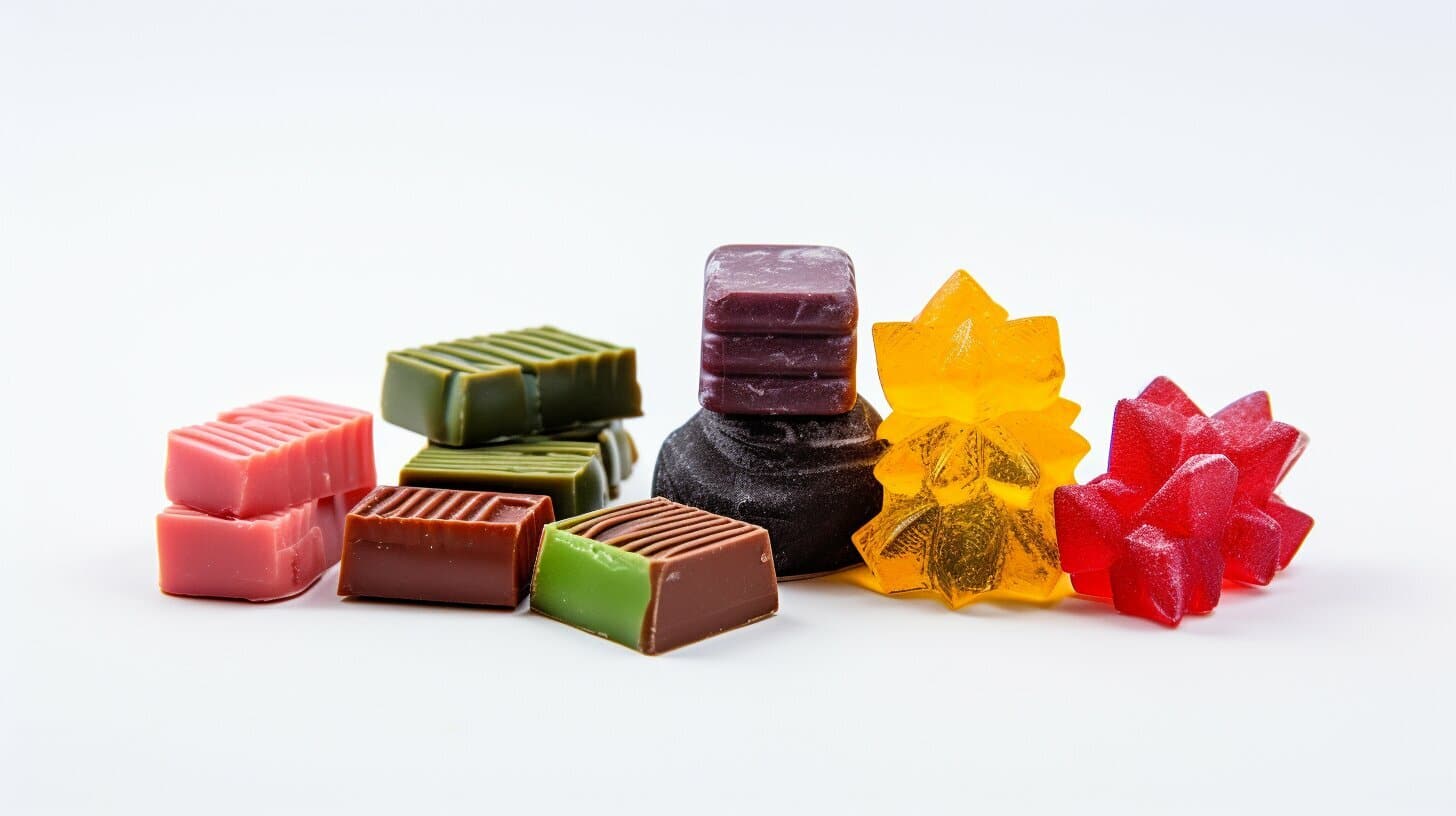
In my experience, discussion about cannabis edibles tends to attract numerous myths. I aim to clarify these misunderstandings by contrasting popular misconceptions with the realities, focusing on the effects, risks, and benefits of edibles.
Myth vs. Reality
Myth: Edibles take effect immediately after consumption.
- Reality: The effects of edibles are typically delayed, often taking anywhere from 30 minutes to several hours to manifest.
- This delay is due to the digestive and metabolic processes that edibles must go through before their active compounds enter the bloodstream.
Myth: The strength of edibles is the same as smoking cannabis.
- Reality: Edibles often produce a longer-lasting and more intense effect than smoking.
- This is because the active compound, THC, is converted into 11-hydroxy-THC, which has a stronger psychoactive effect, by the liver during digestion.
Myth: You can’t overdose on edibles.
- Reality: While a fatal overdose on edibles is highly unlikely, it’s possible to consume more than is comfortable or appropriate for an individual, leading to unpleasant experiences such as extreme disorientation or anxiety.
- Education about proper dosing is essential.
Myth: Edibles are a ‘safer’ option compared to other forms of cannabis.
- Reality: The risks associated with edibles can differ but not necessarily decrease.
- For example, the delayed onset can result in accidental overconsumption, and for those with certain health conditions, digesting cannabis may pose additional risks.
Myth: The effects of edibles are purely recreational.
- Reality: Beyond recreational use, edibles can offer therapeutic benefits, such as relief from chronic pain, reduced anxiety, and improved sleep quality.
- However, they should be used mindfully, considering the potential side-effects and the individual’s physiological response.
Advanced Topics in Edibles Consumption
In exploring edibles, I’ll take a close look at the interplay between cannabinoids and the digestive system. I’ll also explore how this affects bioavailability and metabolism.
Delving Deeper into Edible Science
Edibles offer a unique method of cannabis consumption. When I consume edibles, the active components in cannabis, such as THC and CBD, pass through my liver before entering my bloodstream. This process is known as first-pass metabolism.
The bioavailability of cannabinoids from edibles is different from other consumption methods. It is influenced by factors like my individual metabolism and the composition of my last meal. For instance, edibles high in fat can enhance the absorption of cannabinoids since they are fat-soluble.
- Cannabinoid Absorption: The absorption rate of cannabinoids in edibles can greatly vary.
- THC is metabolized into 11-hydroxy-THC in my liver, which is more potent than THC itself and contributes to a stronger and longer-lasting effect.
- CBD, on the other hand, may interact with fatty acids to improve its bioavailability, making the selection of edible types quite pivotal.
Table 1: Influential Factors on Cannabinoid Bioavailability from Edibles
| Factor | Influence on Bioavailability |
| Type of Edible | Fatty edibles can aid in cannabinoid absorption. |
| My Metabolic Rate | Determines the speed at which cannabinoids are processed. |
| Digestive Efficiency | Influences how well cannabinoids are absorbed. |
Special Considerations for Edible Consumption
When I approach the subject of edibles, I find it imperative to factor in personal dietary restrictions and allergies. Understanding these details is crucial because they directly influence the safety and enjoyment of the edible experience.
Dietary Restrictions and Allergies
When considering edibles, particular attention must be paid to dietary restrictions and allergies. It’s essential to examine the labeling of the product carefully. For individuals with gluten intolerance, for instance, gluten-free options are a must. Likewise, if you have a nut allergy, it’s paramount to ensure the edible hasn’t been produced in a facility where cross-contamination is possible.
In terms of ingredients, look for clear, understandable lists that state everything contained within. If there’s anything I don’t recognize or if a product lacks this transparency, I steer clear to avoid the potential of an allergic reaction.
My advice is to always check with the manufacturer if the information on the packaging is unclear or insufficient. Remember, it’s about enjoying the benefits of edibles safely, without risking health.
Culinary Exploration with Cannabis Edibles
As someone who appreciates the vast culinary potential of cannabis, I understand that integrating this versatile ingredient into edibles is an exciting venture. My exploration involves creating homemade dishes that not only deliver the desired effects but also please the palate.
Homemade Edibles and Recipes
When I embark on making homemade cannabis edibles, I prioritize precision and creativity in my recipes. I find that baking and cooking are two fundamental methods where cannabis can be infused effectively. Here are a few steps I always consider in the process:
- Decarboxylation is crucial. Before infusing, cannabis needs to be heated gently to activate the THC.
- Choosing a fat-based ingredient like butter or oil to infuse with cannabis is essential as THC is fat-soluble.
- Dosage is key; I begin with a small amount and adjust according to taste and desired potency.
In my recipes, I use the following table to track the important aspects of each edible creation:
| Ingredient | Quantity | Cannabis (THC/CBD) Dosage | Infusion Method |
| Butter | 1 cup | 10mg THC/g | Slow and Low Heat |
| Coconut Oil | 1/2 cup | 5mg CBD/g | Double Boiler |
When baking edibles, I recommend starting with simpler recipes, like brownies or cookies. They are forgiving and an excellent way to experiment with different cannabis strains and flavors. I always ensure that the cannabis taste is well-balanced with the other ingredients.
For those interested in culinary exploration beyond baking, cooking with cannabis provides an array of possibilities. Infused olive oil can transform a salad dressing, and a tablespoon of cannabutter can elevate a pasta dish or a side of vegetables.
Combining my knowledge of food with the art of cannabis infusion allows me to tailor each recipe to my liking. Be it a sweet treat or a savory masterpiece, the journey of homemade cannabis edibles is as rewarding as it is delicious.
Managing Expectations and Experiences with Edibles
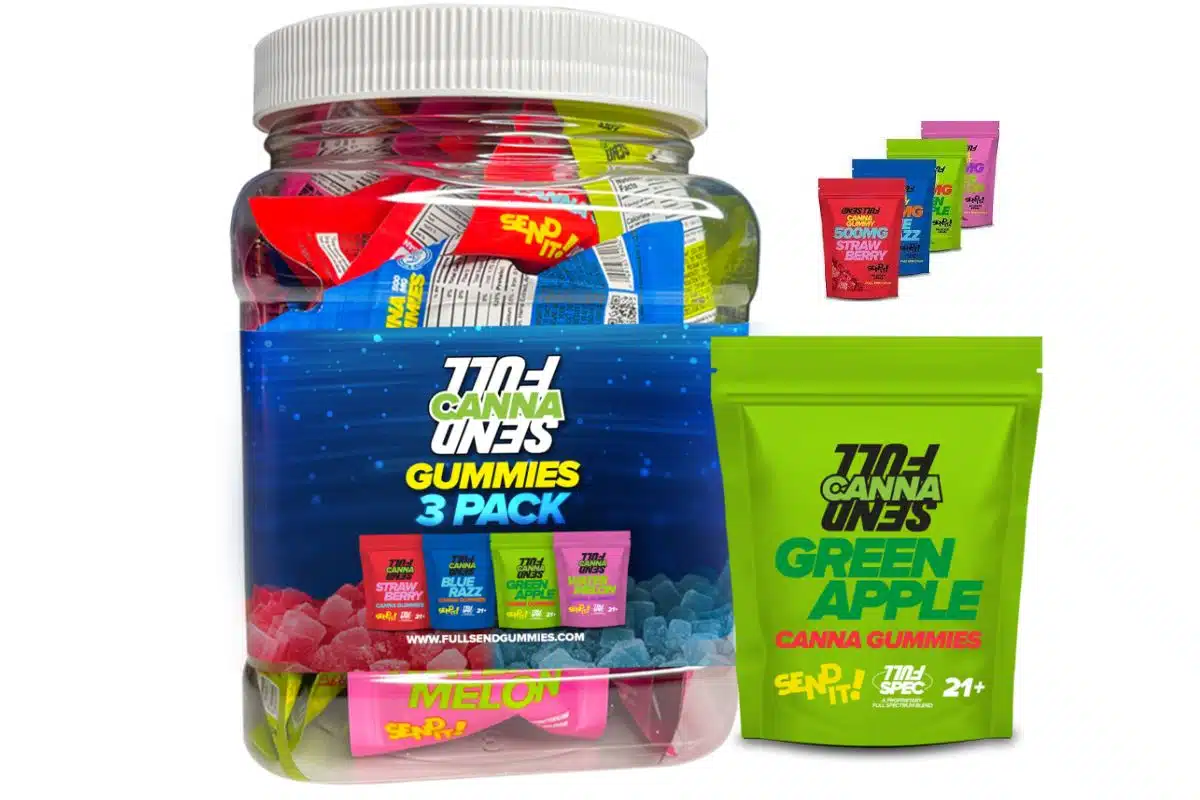
When I discuss edibles, my focus is on helping individuals understand what to anticipate and how to navigate the experience effectively. From the onset of effects to the intensity and duration, I ensure that my guidance is rooted in reality.
Setting Realistic Expectations
When I take edibles, I consider several factors to set realistic expectations for the experience. Relaxation and pain relief are common reasons behind my use, but knowing the potential for anxiety and other side effects is essential. Here’s a quick list I follow to manage my expectations:
- Dosage: Start with a low dose, and give it time. Effects can take anywhere from 30 minutes to 2 hours to manifest.
- Patience: I avoid consuming more until I’m sure of how the initial dose affects me.
- Environment: I prefer a comfortable and safe space, as it enhances relaxation and reduces the chance of anxiety.
- Purpose: Whether for pain relief or recreation, I stay clear about why I’m using edibles, which helps me set the tone for the experience.
The Role of Dispensaries in Edible Education
Cannabis dispensaries have a pivotal role in the education of consumers, especially when it comes to edibles. My insights in this section will focus on the expertise and responsibilities of dispensary staff in guiding consumers through safe and informed usage of edible products.
Dispensary Staff and Consumer Education
When I step into a well-run dispensary, I expect the staff to be knowledgeable not only about the various products on the shelves but also about responsible consumption practices. In my experience, they provide crucial education on how to read product labels carefully, understanding the potency and the expected onset time of different edibles. These trained professionals play a significant role in ensuring consumers are aware of the unique effects edibles can have compared to other forms of cannabis consumption.
Dispensary staff often lead the way in educating consumers about the importance of starting with a low dose and waiting for the effects before consuming more. This practice is known as “start low and go slow” in the cannabis community. Here’s a quick glance at what a consumer should look to understand from product labels:
- THC content: This indicates how potent the edible is.
- CBD content: Important for those looking for therapeutic benefits without intense psychoactive effects.
- Serving size: Critical to prevent overconsumption.
- Ingredients: For those with dietary restrictions or allergies.
Frequently Asked Questions
In this section, I’ll share important information on the timing and effects of edibles, helping you make informed decisions about consumption.
How long after consuming edibles does the effect typically begin?
The effects of edibles can begin within 30 minutes to 2 hours post-consumption. Digestive factors and individual metabolism play significant roles in this onset time.
Does food consumption prior to taking edibles affect their potency?
Yes, eating food before consuming edibles can indeed affect potency. A full stomach may slow the absorption of THC, potentially leading to a more gradual and extended effect.
Is there an optimal time of day to consume edibles for maximum effect?
The optimal time of day may vary depending on personal schedules and the desired outcome. Some individuals prefer use in the evening due to the long-lasting effects that can facilitate relaxation and sleep.
What are common mistakes to avoid after consuming edibles?
One common mistake is consuming additional edibles too soon after the initial dose because effects can take time to manifest. It’s recommended to wait at least 24 hours before considering an additional dose.
How long do the effects of edibles last?
Edible effects can last anywhere from 4 to 12 hours, with peak intensity occurring between 1 to 3 hours after consumption. Factors contributing to duration include dose, potency, and individual metabolism.
Can the effectiveness of edibles be influenced by tolerance levels?
Yes, my tolerance level can influence the effects. Regular cannabis use may lead to higher tolerance. This can reduce the perceived intensity of edibles. Conversely, low tolerance can intensify their effects.

